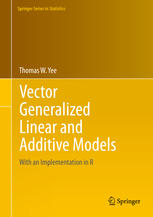

Most ebook files are in PDF format, so you can easily read them using various software such as Foxit Reader or directly on the Google Chrome browser.
Some ebook files are released by publishers in other formats such as .awz, .mobi, .epub, .fb2, etc. You may need to install specific software to read these formats on mobile/PC, such as Calibre.
Please read the tutorial at this link: https://ebookbell.com/faq
We offer FREE conversion to the popular formats you request; however, this may take some time. Therefore, right after payment, please email us, and we will try to provide the service as quickly as possible.
For some exceptional file formats or broken links (if any), please refrain from opening any disputes. Instead, email us first, and we will try to assist within a maximum of 6 hours.
EbookBell Team

0.0
0 reviewsThis book presents a greatly enlarged statistical framework compared to generalized linear models (GLMs) with which to approach regression modelling. Comprising of about half-a-dozen major classes of statistical models, and fortified with necessary infrastructure to make the models more fully operable, the framework allows analyses based on many semi-traditional applied statistics models to be performed as a coherent whole.
Since their advent in 1972, GLMs have unified important distributions under a single umbrella with enormous implications. However, GLMs are not flexible enough to cope with the demands of practical data analysis. And data-driven GLMs, in the form of generalized additive models (GAMs), are also largely confined to the exponential family. The methodology here and accompanying software (the extensive VGAM R package) are directed at these limitations and are described comprehensively for the first time in one volume. This book treats distributions and classical models as generalized regression models, and the result is a much broader application base for GLMs and GAMs.
The book can be used in senior undergraduate or first-year postgraduate courses on GLMs or categorical data analysis and as a methodology resource for VGAM users. In the second part of the book, the R package VGAM allows readers to grasp immediately applications of the methodology. R code is integrated in the text, and datasets are used throughout. Potential applications include ecology, finance, biostatistics, and social sciences. The methodological contribution of this book stands alone and does not require use of the VGAM package.